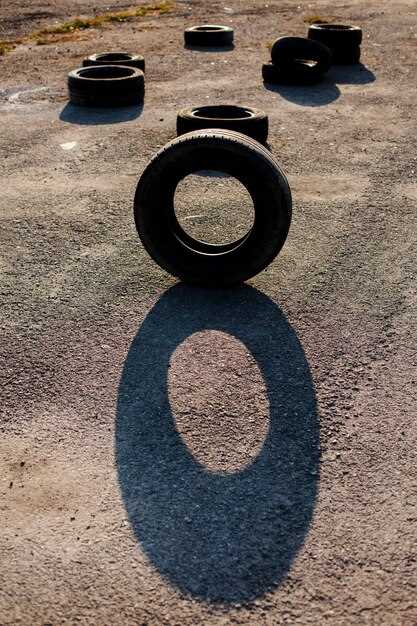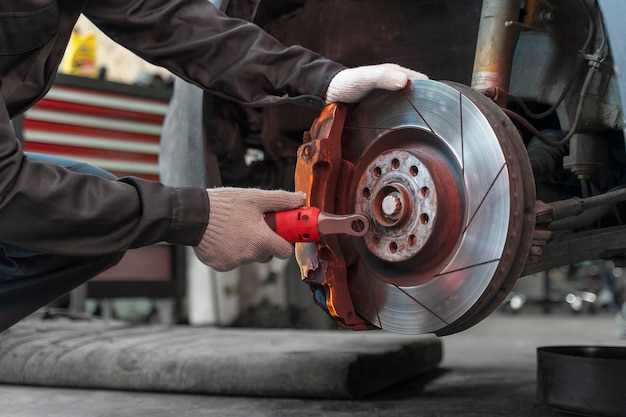
In the high-stakes world of racing, your brakes are not just a part of your vehicle; they are a critical component that ensures your safety on the track. Whether you are a seasoned racer or a weekend enthusiast, understanding the signs that indicate your racing brakes need replacement is vital for enhancing performance and maintaining control. A malfunctioning brake system can lead to disastrous consequences, making it essential to pay close attention to any warning signs.
Worn brake pads are among the most common indicators that your racing brakes require immediate attention. These components are engineered to withstand extreme temperatures and pressures, but even the best materials can wear down over time. If you notice a decrease in braking efficiency, increased stopping distances, or hear unusual noises such as squeaking or grinding, it may be time to evaluate your brake pads and replace them before they compromise your safety.
Additionally, brake fluid quality plays a crucial role in your racing brakes’ performance. Contaminated or old brake fluid can lead to vapor lock, reducing braking power and affecting responsiveness. Regularly checking the fluid level and its condition is key to ensuring that your brake system is functioning optimally. If you observe discoloration or a significant drop in fluid levels, it is advisable to take immediate action.
By staying attuned to these warning signs, you can ensure your racing brakes are always up to the challenge, providing you with the stopping power needed to navigate the track safely. Don’t underestimate the importance of a functional brake system–your safety depends on it.
Unusual Noises While Braking
When it comes to racing brakes, unusual noises can signal the need for immediate inspection and potential replacement. Recognizing these sounds is crucial for maintaining safety on the track.
- Squeaking or Squealing: High-pitched squeaks usually indicate that the brake pads have worn down significantly. Many racing pads are designed with a wear indicator that produces this noise to alert drivers.
- Grinding: A grinding noise can occur when brake pads are excessively worn, causing the metal backing to make contact with the rotors. This not only reduces braking efficiency but can also damage the rotors, leading to costly repairs.
- Thumping or Pulsing: If you hear a thumping sound while braking, it could suggest warping in the rotors. This issue can lead to uneven wear and potentially compromise the braking system’s integrity during high-speed racing.
- Squealing Under Low Braking Pressure: If noise occurs mainly at low speeds or light braking, it may be due to inadequate lubrication of the brake components or poor-quality brake pads that are not suited for racing conditions.
If you experience any of these noises, it is essential to assess the wear of your brakes immediately. Ignoring these signs can lead to decreased performance and increased risk during racing.
Increased Stopping Distance During Races

An increase in stopping distance during racing can often be a critical sign that your brakes are experiencing wear. When brakes are functioning properly, they should provide immediate and efficient deceleration. However, as the brake components wear down, the material responsible for friction diminishes, resulting in a longer distance needed to bring your vehicle to a halt.
This extended stopping distance can have serious implications on the racetrack. It can compromise your safety and the safety of others, especially in high-speed situations where quick reactions are essential. If you notice that your vehicle requires more space to stop than usual, it is crucial to evaluate the condition of your brakes.
Several factors contribute to increased stopping distance. Overheating during intense racing can lead to brake fade, decreasing their effectiveness. Additionally, worn-out brake pads or discs combined with insufficient brake fluid can exacerbate this issue. Regular inspection of your braking system is vital to ensure optimal performance and maintain safety.
To prevent accidents and ensure reliable stopping power, replace any worn brake components immediately. Prioritizing your brake maintenance can significantly enhance your overall racing experience and keep you and your competitors safe on the track.
Brake Pedal Feels Soft or Spongy
A soft or spongy brake pedal is a significant warning sign that your braking system may require immediate attention. This condition often indicates a problem with the brake fluid or other components of the brake system. When you press the pedal, the feeling should be firm and responsive; if it feels soft, this could signify a few critical issues, including air in the brake lines, low brake fluid levels, or possibly even worn brake components.
It is essential to address this issue promptly, as it can compromise your vehicle’s braking efficiency and overall safety. Ignoring a spongy brake pedal can lead to longer stopping distances, increased wear on brake components, and in worst-case scenarios, brake failure.
Here are some common causes and troubleshooting steps related to a soft or spongy brake pedal:
| Issue | Possible Cause | Recommended Action |
|---|---|---|
| Air in Brake Lines | Air bubbles can enter the hydraulic system, causing a spongy feel. | Bleed the brake lines to remove air. |
| Low Brake Fluid | Low fluid levels may indicate a leak or wear in the brake system. | Check and refill brake fluid; inspect for leaks. |
| Worn Brake Components | Wear on brake pads, rotors, or calipers can affect braking performance. | Inspect brakes for wear and replace components as necessary. |
Regular maintenance and inspections of your braking system can help prevent these problems. If you experience a soft or spongy brake pedal, do not hesitate to consult a professional technician to ensure your vehicle remains safe and roadworthy.
Visible Cracks or Damage on Brake Pads
Racing brake pads are engineered to withstand high temperatures and intense pressure, yet they are not immune to wear over time. One of the most critical indicators that your braking system may need attention is the presence of visible cracks or damage on the brake pads. Cracks can severely compromise the integrity of the material, leading to reduced braking efficiency and potential failure during high-speed racing scenarios.
Inspecting brake pads regularly is essential for any racing enthusiast. If you notice any signs of cracking, it indicates that the pads are experiencing significant stress and may be nearing the end of their lifespan. Damage can occur due to overheating, improper installation, or simply the result of normal wear and tear from aggressive driving. Failure to address such damage can lead to uneven braking, increased stopping distances, and ultimately, a dangerous situation on the track.
Additionally, it’s crucial to assess not just the surface of the brake pads but also their overall structure. Any visible signs of degradation, such as flaking or crumbling, can further indicate that the pads are no longer fit for racing. Replacing damaged brake pads promptly ensures optimal performance and safety, allowing you to focus on your racing without the worry of brake failure.
Frequent Brake Fade Under Heavy Use
One of the most critical indicators that your racing brakes require replacement is frequent brake fade. This phenomenon occurs when the braking system overheats due to excessive usage, resulting in a significant loss of stopping power. Under heavy use, such as during high-speed racing or extended periods of braking, the brake components can become less effective, causing discomfort and compromise in safety.
Brake fade typically manifests when the brake pads and rotors heat up beyond their operational limits. As the temperature rises, the friction material on the pads begins to deteriorate, which leads to diminished performance. If you notice that your racing brakes feel softer or less responsive, particularly after sustained application, it’s a strong signal that your brake system is struggling to maintain effectiveness. Ignoring this issue can lead to catastrophic failures, putting both the driver and others at risk.
Regularly monitoring your brakes and being aware of signs like fade is essential for any racing enthusiast. Upgrading to high-performance brake pads and rotors designed for heavy usage can significantly reduce the risk of fade. Ultimately, proper maintenance and timely replacements are crucial to ensure optimal braking performance during intense racing conditions.
Reduced Performance in Wet Conditions

One of the most critical signs that your racing brakes may need replacement is their reduced performance in wet conditions. When brake components wear down over time, their ability to effectively grip and slow down your vehicle diminishes, especially on slippery surfaces.
Racing brakes are designed to perform under extreme conditions, but when they begin to wear, they can struggle to generate the necessary friction required for optimal stopping power. In wet conditions, the combination of moisture and diminished brake performance can significantly increase stopping distances, making it imperative to monitor the health of your braking system.
Additionally, worn pads may result in uneven contact with the rotor, which can lead to decreased efficiency. If you notice that your braking response becomes less predictable during rain or wet conditions, this could be a clear indicator that your brakes are not performing as they should. Addressing brake wear before excessive damage occurs is essential for maintaining safety on the track and in daily driving.
Regular inspection and timely replacement of racing brakes are crucial for ensuring their effectiveness. Never underestimate the importance of functioning brakes, not only for performance but also for your safety when driving in less-than-ideal conditions.




